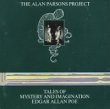
The Alan Parsons Project was the result of a union between producer and sound engineer Alan Parsons and creative director Eric Woolfson. Sharing some interests like horror movies and literature, they tried to create one project, a conceptual opus titled “Tales of mystery and imagination”. This album was to be a musical resemblance of Edgar Allan Poe’s work. Continue reading Allan Poe by Alan Parsons
Tag: music
Pulsars, Planets, Poms
Pulsars
http://www.jb.man.ac.uk/~pulsar/Education/Sounds/sounds.html
 A pulsar is a highly magnetised neutron star, with a radius of 10-15 km, having somewhat greater mass than the Sun which has a radius of approximately 1 million km. Radiation is beamed out along the magnetic poles and pulses of radiation are received as the beam crosses the Earth, in the same manner as the beam from a lighthouse causes flashes.
A pulsar is a highly magnetised neutron star, with a radius of 10-15 km, having somewhat greater mass than the Sun which has a radius of approximately 1 million km. Radiation is beamed out along the magnetic poles and pulses of radiation are received as the beam crosses the Earth, in the same manner as the beam from a lighthouse causes flashes.
Listen to the sound of a Pulsar
Planets
http://www.nasa.gov/mission_pages/cassini/multimedia/pia07966.html
 Saturn is a source of intense radio emissions, which have been monitored by the Cassini spacecraft. The radio waves are closely related to the auroras near the poles of the planet. These auroras are similar to Earth’s northern and southern lights. This is an audio file of radio emissions from Saturn.
Saturn is a source of intense radio emissions, which have been monitored by the Cassini spacecraft. The radio waves are closely related to the auroras near the poles of the planet. These auroras are similar to Earth’s northern and southern lights. This is an audio file of radio emissions from Saturn.
Listen to the eerie Sounds of Saturn’s Radio Emissions
Poms
http://www.envelooponline.com/main.htm
 POM is the short for Petit Objet Musical, that is, a Little Musical Object (…)They are offered as landscapes or “living sculptures”(…)I record typically two to three minutes as to get a detailed image of all the nuances in the sound, but these are only windows into conceptually infinite pieces.
POM is the short for Petit Objet Musical, that is, a Little Musical Object (…)They are offered as landscapes or “living sculptures”(…)I record typically two to three minutes as to get a detailed image of all the nuances in the sound, but these are only windows into conceptually infinite pieces.
Listen to Pom n.17 (which I also call “Forbidden Planet”, after the soundtrack of the classic movie).
Source: musicthing
Electronic scene at a glance
Online Record Store
Not only they have a huge catalog of cds/dvds and vinyls (and some gear too), but they offer excerpts of every single song in real audio format. If you like electronic music, this place is a must-visit.
Scores Galore
http://www.dlib.indiana.edu/variations/scores/
# Scores are in the public domain
# Available from anywhere
This is a collection of Public Domain music scores which I find valuable as a Composition student. For instance, many of the operas are provided in both full and vocal score, which is very helpful when practicing reduction and orchestration. I prefer to have the book in front of me better than the screen or a print from the file, but it´s nice to know that all those materials are at hand if needed, may be the case that you lose the score of “Dido and Aeneas” the day before the Choir exam. (yes, it happened).